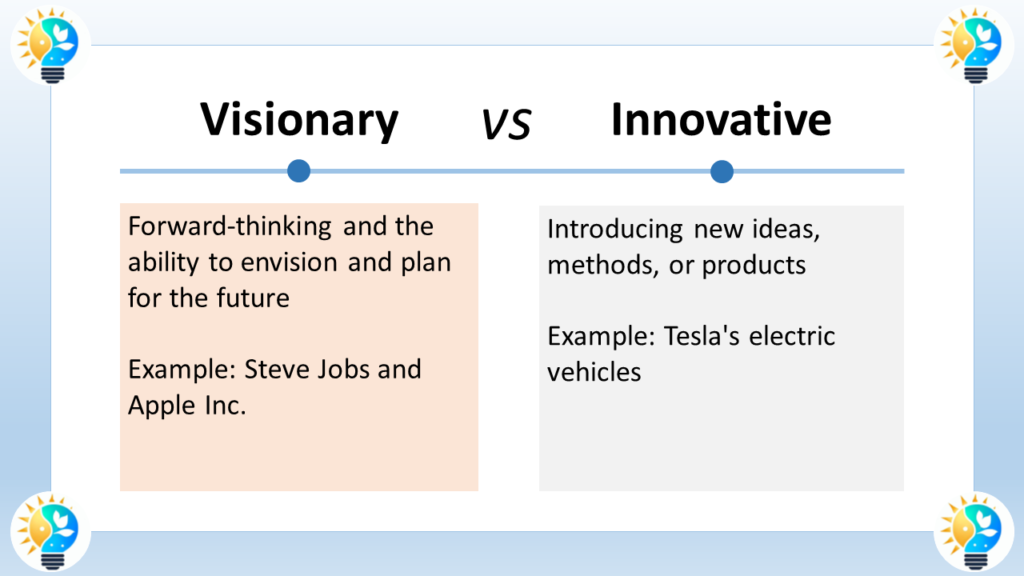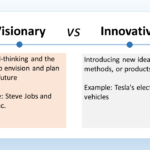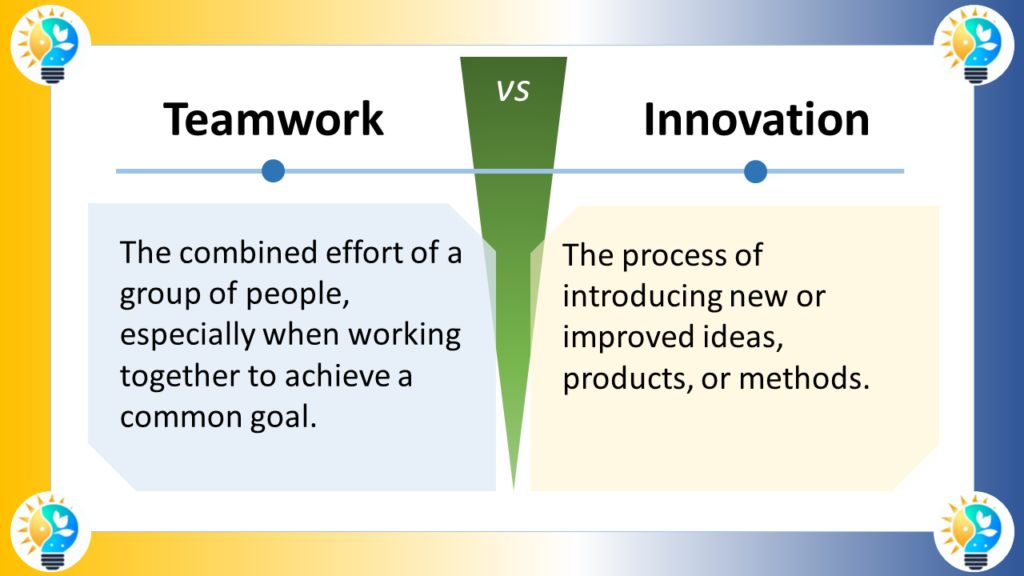Both terms involve thinking about the future, but “innovative” implies a practical application or implementation of new ideas, while “visionary” emphasizes a clear and vivid mental image of the future.

Difference Between Innovative and Visionary
In the world of business and leadership, the terms “innovative” and “visionary” hold distinct meanings that shape organizational strategies and outcomes.
Definition
Innovative:
Innovation refers to the creation of new ideas, products, or processes aimed at achieving unique strategic goals.
Visionary:
Visionary leaders possess foresight and a clear vision of where they want to take their organizations.
Innovative Terms

Innovation is considered as a driving force in progress.
It includes the introduction of novel ideas, methods, or products that bring positive change and advancement.
For more information about innovations, check our glossary
Innovative
Characteristics: Innovation is marked by the creation of new ideas, products, or processes aimed at achieving unique strategic goals.
Focus: Innovative companies like Google, Facebook, and Apple prioritize specific strategic aims rather than just striving to be innovative for the sake of it.
Approach: These companies often focus on incremental improvements in products, services, and processes rather than breakthrough innovations.
Examples: Companies like Lenovo are considered averagely innovative, emphasizing high-quality products but not necessarily groundbreaking innovations.
Visionary
Characteristics: Visionary leaders possess foresight and a clear vision of where they want to take their organizations.
Leadership Style: Visionary leaders like Steve Jobs and Mark Zuckerberg are known for their strategic focus on unique goals rather than just being innovators.
Organizational Impact: Visionary leadership inspires teams to work on the edge of innovation, taking risks and conducting experiments to achieve long-term visions.
Strategic Thinking: Visionaries often engage in strategic thinking that involves pitching bold ideas, exploring innovations, and seeking insights from diverse sources.
FAQ
Q: What is the difference between innovative and visionary?
A: Innovative refers to the creation of new ideas, products, or processes, while visionary leaders possess foresight and a clear vision of where they want to take their organizations.
Q: Can a company be both innovative and visionary?
A: Yes, a company can be both innovative and visionary, as long as they focus on specific strategic goals and have a clear vision of where they want to take their organization.
Q: What is the role of strategic thinking in visionary leadership?
A: Strategic thinking is essential for visionary leaders, as it involves pitching bold ideas, exploring innovations, and seeking insights from diverse sources to drive long-term growth.
Q: What are some examples of innovative companies?
A: Companies like Google, Facebook, and Apple are considered innovative, as they focus on creating new ideas, products, and processes to achieve specific strategic goals.
Q: What are some examples of visionary leaders?
A: Visionary leaders like Steve Jobs and Mark Zuckerberg are known for their strategic focus on unique goals and their ability to inspire teams to work on the edge of innovation.
In summary, while innovative companies focus on creating new solutions to meet specific strategic aims through incremental improvements, visionary leaders drive organizations forward with a clear vision and strategic thinking that inspires innovation and growth in alignment with long-term goals.
- Creative Jeffrey: Visionary Thinking
- LinkedIn – Tatyana Mamut: Innovation Beyond Visionary
- WikiDiff: Visionary vs. Innovative
- LinkedIn – Ray Anthony: Strategic Thinking for Visionaries
- Fast Company: Visionary Leadership and Innovative Executives


